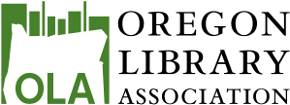OASL on Strong School Library ProgramsIntroduction: Documents: School Library Indicators: These are the two school library indicators to be addressed when completing the district Continuous Improvement Plan:
Resources:
Standards
Oregon School Library Standards
Standards for the 21st-Century Learner, American Association of School Librarians (AASL) Studies and Research Good Schools Have School Librarians: Oregon School Librarians Collaborate to Improve Academic Achievement Study about impact of Oregon school library programs by Dr. Keith Curry Lance Research Related to School Libraries Compiled by the California Department of Education
School Libraries Impact Studies
Research and statistics compiled by Library Research Service School Libraries Work! Summarizes key findings from multiple research studies of school library programs; compiled by Scholastic
School Library Research Summarized Information for Administrators
Getting the Most from Your School Library Program
Includes “13-Point Library Media Program Checklist for School Principals” by Doug Johnson Implementing the Common Core State Standards: The Role of the School Librarian Designed for school librarians and for school leaders as they rethink and re-envision the role that the library can play in a major school improvement initiative; action brief from Achieve and AASL Leading In and Beyond the Library Explains the key role that school librarians and libraries play in state and district-wide efforts to transition to digital learning; report from Alliance for Excellent Education The Principal’s Guide to a Powerful Library Media Program
Book by Dr. Marla McGhee, a former school administrator, and Barbara Jansen, school librarian; borrow this title from the State Library Principals Know: School Librarians are the Heart of the School 5-minute film that features administrators around the country describing the value of the librarian in school culture; coordinated by educational leadership and library & information studies professors at Texas Woman’s University School Library Programs Improve Student Learning Brochure from AASL Staffing and Budget Recommendations and Resources
Average Book Prices
Compiled annually by School Library Journal staff Oregon Administrative Rule 581-022-1520: Media Programs Provides staffing and per student library media center materials budget guidelines for prototype schools
Quote from ODE’s “Resources and Research for Oregon’s District Improvement Indicators” (p. 103):
As districts are coming out of the recession and seeing an increase in funding from multiple sources, district policies and practices on staffing of school libraries should be reviewed. Many districts have moved away from certified staff in libraries and have hired paraprofessionals to staff libraries full or part-time. The evidence is clear that district policy and hiring practice should favor placing a full-time, certified school librarian in each school library. Position Statements AASL Position Statements National Council of Teachers of English: Resolution on Supporting School and Community Libraries For more information, contact
|
